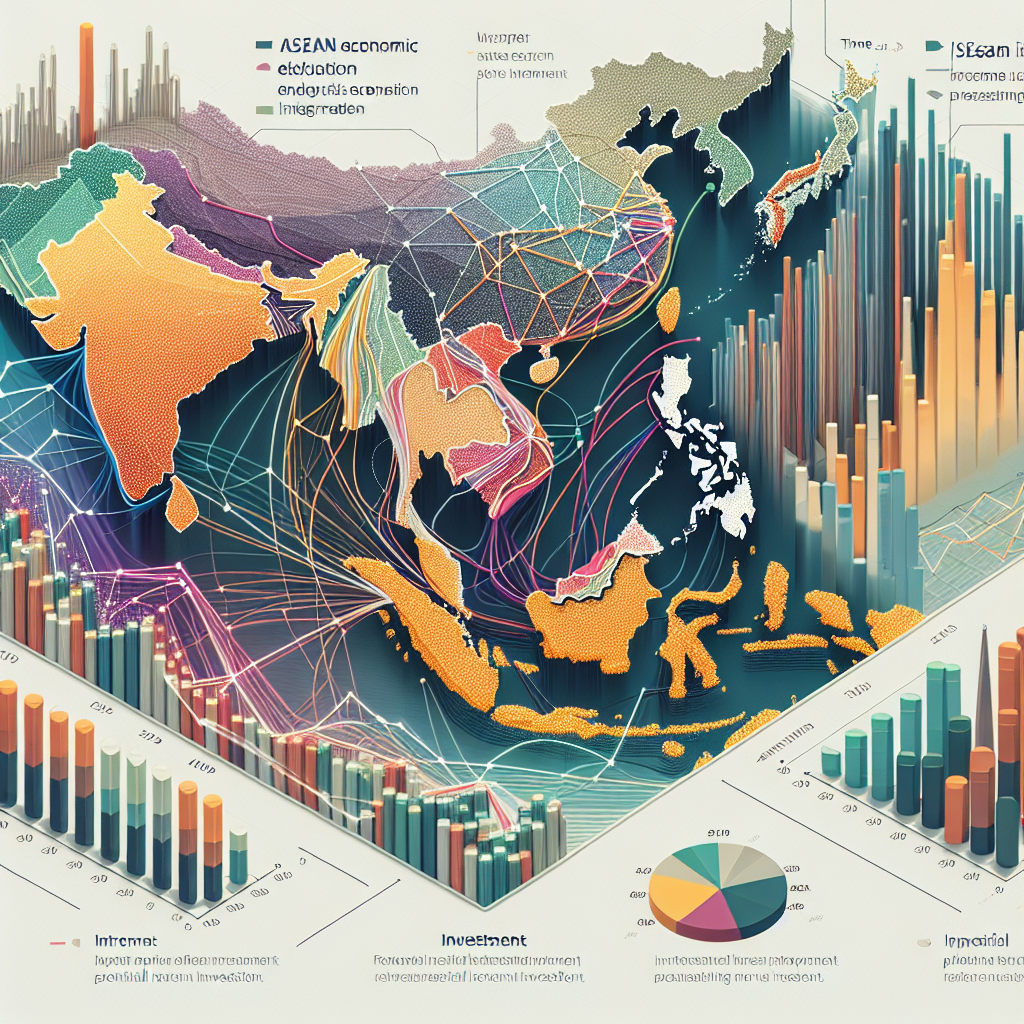ASEAN’s Economic Integration: Progress Report and Investment Implications

The Association of Southeast Asian Nations (ASEAN) has made significant strides in economic integration over the past few decades. Established in 1967, ASEAN aims to promote political stability, economic growth, and cultural exchange among its ten member states: Indonesia, Malaysia, the Philippines, Singapore, Thailand, Brunei, Vietnam, Laos, Myanmar, and Cambodia. This article provides a progress report on ASEAN’s economic integration and explores the implications for investment in the region.
Progress in Economic Integration
ASEAN’s economic integration efforts have been primarily driven by the ASEAN Economic Community (AEC), which was officially launched in 2015. The AEC aims to create a single market and production base, allowing for the free flow of goods, services, investment, and skilled labor. Key milestones in this journey include:
- ASEAN Free Trade Area (AFTA): Established in 1992, AFTA has significantly reduced tariffs among member states, promoting intra-regional trade.
- ASEAN Trade in Goods Agreement (ATIGA): Implemented in 2010, ATIGA further streamlines trade processes and enhances trade facilitation.
- ASEAN Comprehensive Recovery Framework: Launched in response to the COVID-19 pandemic, this framework aims to accelerate economic recovery and resilience.
As of 2022, intra-ASEAN trade accounted for approximately 23% of the region’s total trade, a significant increase from 18% in 2010. This growth reflects the success of trade agreements and the increasing interdependence of member economies.
Investment Climate in ASEAN
The investment landscape in ASEAN is becoming increasingly attractive due to several factors:
- Growing Middle Class: The region’s middle class is projected to reach 400 million by 2030, driving demand for goods and services.
- Strategic Location: ASEAN’s geographical position makes it a gateway to the Asia-Pacific market, facilitating trade with major economies like China and India.
- Digital Transformation: The rise of e-commerce and digital services has opened new avenues for investment, particularly in technology and fintech sectors.
According to the ASEAN Investment Report 2021, foreign direct investment (FDI) inflows into ASEAN reached $137 billion in 2020, despite the challenges posed by the pandemic. This figure underscores the region’s resilience and attractiveness to global investors.
Challenges to Economic Integration
Despite the progress made, ASEAN faces several challenges that could hinder further economic integration:
- Diverse Economies: The economic disparity among member states can complicate the implementation of uniform policies.
- Regulatory Barriers: Non-tariff barriers and differing regulations can impede trade and investment flows.
- Political Instability: Issues such as political unrest in Myanmar and tensions in the South China Sea can create uncertainty for investors.
Case Studies: Successful Investments in ASEAN
Several multinational corporations have successfully navigated the ASEAN market, demonstrating the region’s investment potential:
- Unilever: The consumer goods giant has established a strong presence in ASEAN, leveraging local partnerships to cater to diverse consumer preferences.
- Alibaba: The Chinese e-commerce leader has invested heavily in Southeast Asia, particularly in logistics and digital payment systems, capitalizing on the region’s growing online shopping trend.
- Samsung: The South Korean tech company has made significant investments in manufacturing facilities across ASEAN, benefiting from lower labor costs and favorable trade agreements.
Conclusion
ASEAN’s journey towards economic integration has yielded substantial progress, creating a more interconnected and competitive region. The growing middle class, strategic location, and digital transformation present significant investment opportunities. However, challenges such as economic disparities and regulatory barriers must be addressed to fully realize the potential of ASEAN as a unified economic bloc. As the region continues to evolve, investors should remain vigilant and adaptable, leveraging the unique opportunities that ASEAN offers while navigating its complexities.
In summary, ASEAN’s economic integration is not just a regional endeavor; it is a vital component of the global economy. The implications for investment are profound, making it essential for stakeholders to stay informed and engaged in this dynamic landscape.





